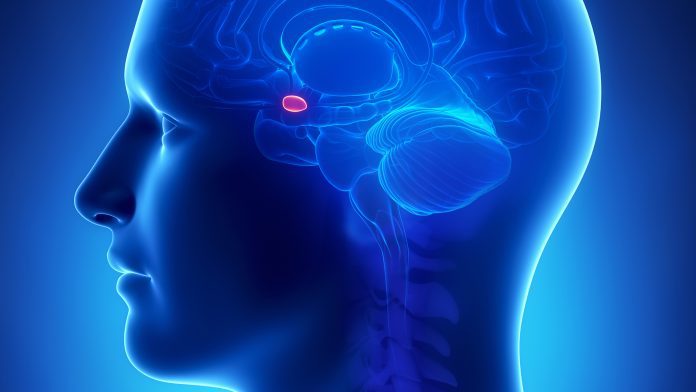
In a groundbreaking study, experts have discovered that alterations to the amygdala may influence the development of anxiety in autistic people.
Researchers from the UC Davis MIND Institute conducted a long-term study comprising hundreds of brain scans, identifying changes in the amygdala may be associated with anxiety in autistic children. Additionally, the team found evidence of specific types of anxiety exclusively related to autism.
Derek Sayre Andrews, a postdoctoral scholar in the Department of Psychiatry and Behavioural Sciences and co-first author on the paper, said: “I believe this is the first study that’s found any kind of biological association with these autism-distinct anxieties. Anxiety is really salient right now with the pandemic, and it’s potentially debilitating to autistic individuals, so it’s important to understand what’s happening in the brain.”
The research is published in Biological Psychiatry.
What is the amygdala?
The amygdala is a tiny region of the brain that resembles the shape of an almond and plays a vital role in processing emotion – most notably fear – with studies suggesting it may be linked to both autism and anxiety.
David G. Amaral, UC Davis distinguished professor, Beneto Foundation Endowed Chair and co-senior author on the paper, commented: “We have known for some time that dysregulation of the amygdala is implicated in anxiety. We’ve also shown previously that the growth trajectory of the amygdala is altered in many autistic individuals.”
Previous studies elucidated that anxiety is prevalent among autistic people, with an investigation from Amaral and researchers for the MIND Institute suggesting that the rate of anxiety is 69% in autistic children and 8% in non-autistic children. However, no research has analysed how amygdala development can impact anxiety disorders in autistic individuals until now.
Assessing brain development
To perform their research, the team employed magnetic resonance imaging (MRI) to scan the brains of 71 children with autism and 55 non-autistic children between the ages of two and 12, who were scanned up to four times. All participants were part of the Autism Phenome Project, a longitudinal study started in 2006 at the MIND Institute.
The parents of the children were interviewed by autism experts when the children were aged between nine and 12 years old, including questions about anxiety. Clinical psychologists used the Anxiety Disorders Interview Schedule (ADIS) and Autism Spectrum Addendum (ASA) tools to identify autism-specific anxieties.
The results illustrated that around 50% of the autistic children had traditional anxiety or autism-distinct anxiety, or both. Moreover, children with traditional anxiety had substantially larger amygdala volumes than non-autistic children, whereas autism-distinct anxieties had smaller amygdala volumes.
Christine Wu Nordahl, a professor in the Department of Psychiatry and Behavioural Sciences and co-senior author on the paper, said: “Previous studies were not teasing apart amygdala size in relation to these two different types of anxiety. We were reminded that different autistic subgroups might have different underlying brain changes. If we had lumped both traditional and distinct anxieties together, the amygdala changes would have cancelled each other out, and we would not have detected these different patterns of amygdala development.
“The real power of this particular study is that it tracks the trajectory of amygdala development from age two to age 12 to see if there are early predictors of these different types of anxiety – whether there are different patterns.”
Evaluating anxieties
Earlier studies identified that anxiety among autistic people is complex; some experience traditional anxiety experienced by non-autistic people, whereas others experience anxiety distinctly specific to autism.
“It’s similar, but the context in which the anxiety arises is different,” Andrews explained. “It could be uncommon phobias like facial hair or toilet seats, or it could fear relating to social confusion or excessive worries related to losing access to materials about something they’re really interested in. It’s anxiety arising within an autistic context.”
Due to this type of research into autism-distinct anxiety being new, more investigations will need to be carried out to confirm these results.
“Given that clear brain alterations are associated with autism-distinct anxiety tends to validate the concept of the existence of this type of anxiety in autism,” Amaral said.
Only 15% of the participants had distinct autism-specific anxiety in the study.
Andrew said: “You can see why it’s important to acknowledge this because these children would be missed through ordinary screening. That’s why it’s important to understand the underlying biology of anxiety and autism and to help these kids out in any way that we can.”
The team are looking to examine how the amygdala influences other regions of the brain in future projects.
“We don’t think the story ends with the amygdala,” Nordahl said. “We recognise that it doesn’t act all by itself, and it’s critical to explore who the amygdala is talking to and what it’s doing through its network of connections with other brain regions.”









